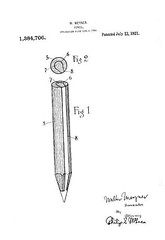We’re seeing some extraordinary snowmelt right now. Coming a month early, it’s setting this-date-in-history records up in the Rio Grande Gorge:
Never, in more than a century of record keeping, have we seen a March snowmelt like that flowing down the Rio Grande Gorge in northern New Mexico right now.
Record warmth across the mountains of northern New Mexico and Colorado is rapidly turning a middling snowpack into soup. The question is how much of that soup ends up in New Mexico’s rivers and reservoirs and how much evaporates before it gets to water users in New Mexico and points south.
So far, according to National Weather Service hydrologist Ed Polasko, it looks like the rivers are winning.
“Even though the snowpack is coming down like a rock, the rivers are coming up like crazy,” Polasko said Wednesday.
It’s worth revisiting Tom Pagano’s EOS paper on the 2004 March melt, which was a memorable epic early spring. Also Dan Cayan’s paper from 2001 using phenological data to look patterns of early spring onset. And Phil Mote’s work on declining mountain snowpack in the West.
I don’t want to misstate the importance of what’s going on here. In terms of water supply, there is some argument to be made that a big part of what’s happen is merely earlier melt – that it all ends up in the reservoirs anyway, just at a different time. With the enormous buffer of the big southwestern reservoirs, timing is irrelevant. (Different story in the Pacific Northwest, but I’m less familiar with the issues there.) But to the extent that part of what goes on in these early springs is increased evaporation/transpiration, this signals an interesting regime change for those of us living here in arid country.
Update: Down in the comments, Dano makes a good point worth pulling out:
A slower snowmelt generally means slower percolation thru the soil, making soil moisture last longer. Not always, but a good rule of thumb. Native grasses are adapted to that moisture being there in April-May. Just because it ends up in the reservoir anyway doesn’t do the biota adapted to a different regime any good. We’re conducting an experiment with no control.
He’s absolutely right, and I didn’t mean to give the ecosystem issue short shrift. I’m real focused on water supply issues right now, but we shouldn’t ignore the various other systems influenced by the changes underway.






